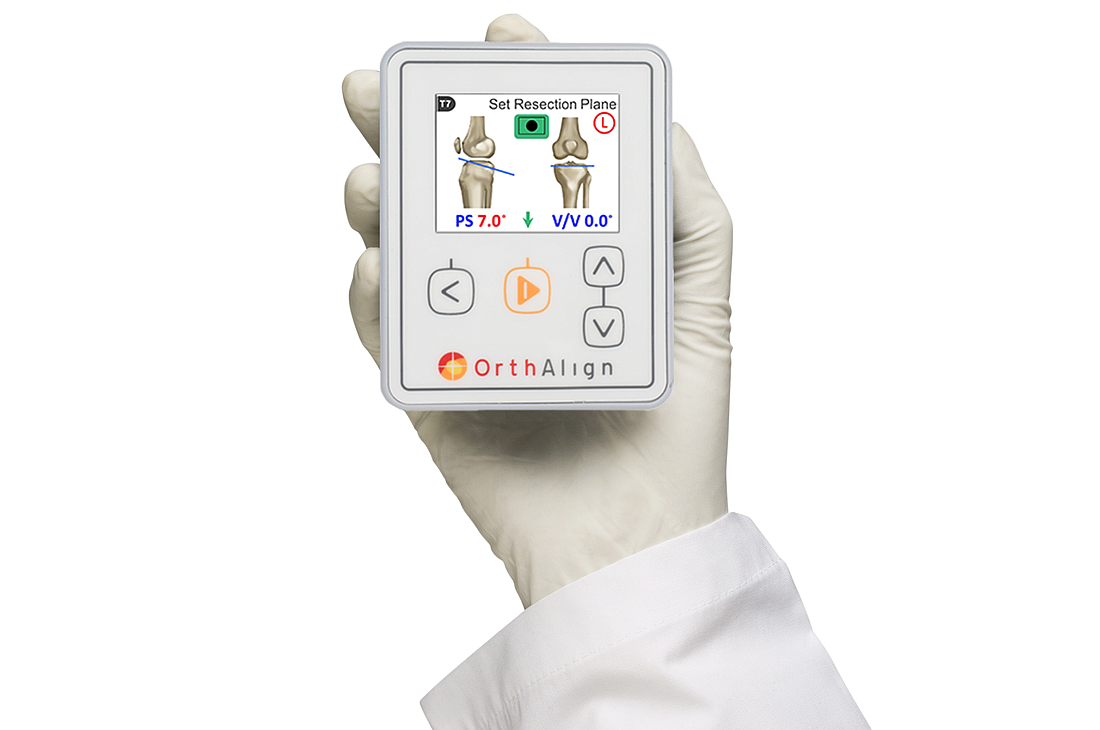- April 20, 2024
-
-
Loading

Loading

If you’re experiencing knee pain and looking for treatment or surgery options, an upcoming seminar could get you back on your feet.
Dr. Obi Adigweme, an orthopedic physician and hip and knee specialist from the Orlando Orthopaedic Center, is hosting a free educational seminar Thursday, Aug. 22, at the center in Winter Garden. Adigweme will speak about knee pain and relief options.
If non-surgical options haven’t worked, one of the latest trending options for a knee replacement involves computer navigation — using technology to accurately pinpoint where to make incisions and the placement of the new knee.
“Every patient has similar anatomic landmarks, and so when we do a knee replacement without computer navigation, we find these landmarks on the bone and then we judge these landmarks and then we make our cuts and we make our movements,” he said. “The problem is that every surgeon varies with their interpretation. Some of it is subjective — whether this is five degree or eight degrees. Patients’ anatomy is not always the same, so there’s always variations — that leaves room for error. But when you’re using computer navigation or robotics, there’s almost no error.”
Computer navigation is either image-based or imageless, using either a CT scan or a laser pointer that touches certain parts of the bone, registering information onto a computer so the surgeon can make precise cuts.
Research currently is being conducted to measure the effectiveness of computer navigation over several decades, but early signs show it is far more precise, Adigweme said.
“When I think about knee replacements — and I think about the way that most patients should think about it — (it’s) what is going to give me the best functional results for the longest period of time,” he said. “I want a knee replacement that is going to function well for me and is going to last me for the next 20, 30 or even 40 years.”
“The whole point of robotics is, ‘Can it make us more accurate and precise?’” he said. “Right now, robotics is relatively new and it’s such an emerging technology that it’s hard to really pin down the data, and so we need longer research. … (But) as of right now, it shows that we’re more precise and more accurate.”
Adigweme said knee replacements in the United States are increasing rapidly — more than 700,000 are done annually. By 2030, doctors expect that most patients who get knee replacements are going to be younger than 60.
The increase is largely because of the ongoing obesity epidemic in the United States. Another contributing factor is how the technology has improved, with implants lasting longer, Adigweme said. The bearing surface — a high-level plastic piece where the cobalt chrome knee implant sits — has become more durable over the years, he said. Patients who might have been hesitant to get the procedure done are now less concerned.
“It is the most common joint replacement,” he said. “It’s one of the most successful surgeries out there. The long-term data on knee replacements is already very good, so that’s why it’s such a great option.”
Knee replacements should be considered a last resort though, he said. Some non-surgical approaches to relieving knee pain include weight loss and low-impact exercises that build stronger quadriceps and hamstrings. As for medications and pharmacological options, there’s anti-inflammatory drugs, steroid injections and viscosupplementations, which are injectable gels that lubricate the joints.
There is also the option of a partial knee replacement if the majority of the knee is in good condition, Adigweme said.